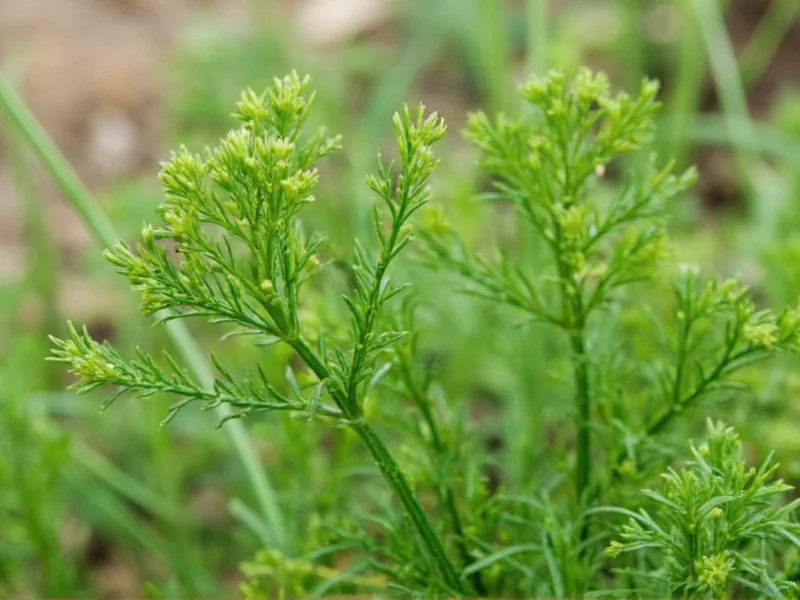Identifying herbs that resemble dill requires careful observation of specific botanical characteristics. Many gardeners and foragers encounter plants that appear similar to dill but belong to different species within the Apiaceae (carrot) family. Understanding these distinctions prevents potentially dangerous misidentifications while helping you make informed choices for culinary and gardening purposes.
Key Differences Between Dill and Common Look-Alikes
Dill (Anethum graveolens) features delicate, feathery leaves with a distinctive yellow-green hue and a tangy, slightly citrus flavor profile. Its look-alikes share similar fern-like foliage but differ in critical ways that affect both identification and usage. The Apiaceae family contains both valuable culinary herbs and dangerously toxic plants, making accurate differentiation essential.
| Herb | Leaf Structure | Stem Characteristics | Flower Color | Distinctive Scent |
|---|---|---|---|---|
| Dill | Fine, thread-like, blue-green | Hollow, smooth, light green | Yellow | Tangy, citrus-like |
| Fennel | Finer, brighter green | Hollow, often purplish base | Yellow | Strong licorice/anise |
| Anise | Broader lower leaves, finer upper | Solid, grooved | White | Pronounced licorice |
| Poison Hemlock | Coarser, darker green | Purple-spotted, hairless | White | Mousy, unpleasant |
Fennel: The Closest Culinary Look-Alike
Fennel (Foeniculum vulgare) represents the most frequently confused herb with dill. Both share hollow stems and yellow flower clusters, but fennel's leaves appear finer and brighter green. The most reliable differentiator is scent: crush a leaf between your fingers. Fennel emits a strong licorice aroma while dill offers a more citrusy, grassy fragrance. Culinary applications differ significantly—dill works best with fish and pickling, while fennel complements Mediterranean dishes and works well roasted.
Gardeners should note that fennel grows taller than dill (up to 6 feet versus dill's 3-4 feet) and develops a bulbous base. When identifying herb that looks like dill but isn't actually dill, checking for this bulb formation provides immediate clarification. Understanding how to tell dill from fennel prevents recipe disasters and ensures proper plant management in your garden.
Anise and Caraway: Subtler Distinctions
Anise (Pimpinella anisum) presents another herb resembling dill, particularly in its early growth stages. Anise features broader lower leaves that become more feathery toward the top. Unlike dill's hollow stem, anise has solid, grooved stems. The white flower clusters distinguish anise from dill's yellow umbels. Anise seeds contain higher concentrations of anethole, creating that characteristic licorice flavor popular in Mediterranean and Middle Eastern cuisines.
Caraway (Carum carvi) shares dill's feathery appearance but grows lower to the ground. Its biennial growth pattern means it doesn't flower until its second year. Caraway seeds feature distinctive curved ridges compared to dill's straighter seeds. When identifying wild herb resembling dill in temperate regions, caraway's earthier flavor profile and seed morphology provide reliable identification markers.
Dangerous Look-Alikes: Poison Hemlock and Water Hemlock
Proper identification becomes critical when distinguishing dill from toxic relatives like poison hemlock (Conium maculatum) and water hemlock (Cicuta species). These plants contain potent neurotoxins that can be fatal if ingested. Poison hemlock features purple blotches on its stem—a characteristic never present in true dill. The leaves appear coarser and darker green with a distinctive unpleasant odor when crushed.
Water hemlock grows in wet areas and features a chambered root structure containing cicutoxin, one of nature's most potent plant toxins. When identifying herb that looks like dill but grows near water sources, extreme caution is warranted. Never consume any plant resembling dill that grows in marshy areas or displays purple-streaked stems. Learning to identify dill versus similar herbs could prevent life-threatening situations.
Practical Identification Tips for Gardeners and Foragers
When trying to identify an herb that looks like dill, follow these systematic steps:
- Examine the stem: Dill has smooth, hollow, uniformly green stems without spots or hairs
- Crush a leaf: Dill emits a clean, grassy-citrus aroma unlike the licorice scent of fennel or unpleasant odor of hemlock
- Check flower color: Dill produces yellow flowers while many look-alikes feature white blooms
- Observe growth habit: Dill typically reaches 3-4 feet while fennel grows taller and hemlock species often exceed 6 feet
- Inspect seed structure: Dill seeds are oval and slightly curved with fine ridges
For those wondering how to tell dill from fennel specifically, focus on the base of the plant. Fennel develops a distinctive bulb while dill maintains a slender taproot. Culinary testing provides definitive identification—dill offers a bright, tangy flavor while fennel delivers pronounced licorice notes. When in doubt about an herb that looks like dill seed formation, consult a local extension service or experienced forager before consumption.
Culinary Applications and Substitutions
Understanding the differences between dill and its look-alikes directly impacts culinary results. While fennel fronds can substitute for dill in some applications, their stronger licorice flavor requires adjustment. Anise seeds work well in baked goods where dill seed would be inappropriate. Caraway serves as a reasonable dill substitute in hearty rye breads and potato dishes.
When working with an herb that looks like dill but isn't confirmed as dill, start with smaller quantities to assess flavor compatibility. Dill's unique combination of citrus and grassy notes makes perfect substitution challenging. For pickling recipes specifically designed for dill, substitutes often produce noticeably different results. Knowing which herb that looks like dill you've actually harvested ensures successful culinary outcomes.
Growing Conditions and Harvesting Tips
Dill thrives in full sun with well-drained soil and requires minimal care once established. It self-seeds readily, often appearing in the same location year after year. For optimal flavor, harvest dill fronds in the morning after the dew has dried but before the heat of the day. The plant produces the most flavorful oils just before flowering.
Fennel prefers similar conditions but tolerates partial shade better than dill. Anise requires warmer temperatures and grows best in Mediterranean climates. When identifying wild herb resembling dill in your region, consider local growing conditions—dill rarely persists as a true perennial in most climates despite its vigorous self-seeding.











 浙公网安备
33010002000092号
浙公网安备
33010002000092号 浙B2-20120091-4
浙B2-20120091-4